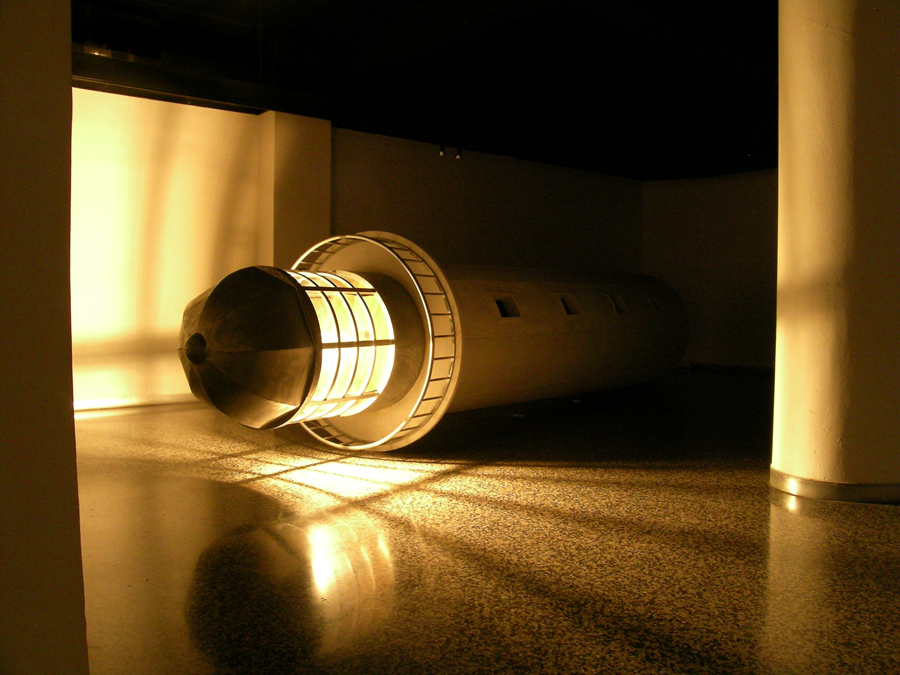Adiós Utopia: Dreams and Deceptions in Cuban Art since 1950
Walker Art Center, Minneapolis, USA
Walker Art Center, Minneapolis, USA

At the entrance to ‘Adiós Utopia: Dreams and Deceptions in Cuban Art since 1950’, a sweeping survey of Cuban art on view at the Walker Art Center, a giant fist brandishes golden fire. Painted a dull orange, the bronze arm – nearly six feet high and seven in length – grasps plaster flames and a pickaxe, reminiscent of a communist sickle. Esterio Segura’s La diestra (Right Hand, 1992) could be a work of early state propaganda, if it weren’t a mute extremity, cut from the body politic and gesturing hopelessly towards empty space. It’s one of many subtle critiques in this astounding show, which comprises more than 100 works made by 50 artists just before, and since, the 1959 Cuban Revolution.
Five years ago, ‘Adiós Utopia’ would have seemed like an impossible exhibition; it might again today. In July 2014, Barack Obama announced a détente with the government of Raúl Castro, after more than half a century of cold war freeze. The Cisneros Fontanals Art Foundation, in partnership with the Museum of Fine Arts, Houston and the Walker Art Center, took the sudden opening to negotiate a major loan of post-revolutionary artworks from the Cuban government. Art is a singular diplomat. By the time the exhibition opened in Houston, however, the next US President had reversed the thaw; most of the loans were withdrawn. Nevertheless, the remaining selection offers a broad survey of the development of a dynamic – if long obscure – art scene, from an efflorescence of concrete abstraction in the 1950s, to the performances and installations of famous expatriates like Los Carpinteros and Tania Bruguera.

Although organized by theme, the exhibition’s timeline begins in 1950 with a gallery of exuberant abstract compositions – small, plinth-mounted sculptures in wood and wire and mixed media paintings – that fit neatly within the concrete art movement sweeping Latin America at the time. Several small monochromes by Carmen Herrera are on display, though more astonishing are paintings by the lesser-known Sandu Darie, in red and black or lively primaries, that resemble works by Kazimir Malevich or Piet Mondrian injected with raw, kinetic energy.
In the next gallery, the revolution’s impact strikes with the force of a missile. At the centre of ‘Cult and Deconstruction of the Revolutionary Nation’ hangs Alberto Korda’s iconic portrait of Che Guevara (Guerrillero heróico, Heroic Guerrilla, 1960), which graced state propaganda posters and newspapers and eventually trendy merchandise sold on the capitalist market. Che’s image appears in silhouette against the armature of a billboard in Arturo Cuenca’s photograph Ciencia e ideología: Che (Science and Ideology: Che, 1987–88), a dark, mythic mass looming over the streets of Havana. Two grotesque oil paintings by Tomás Esson monstrously personify Cuba’s revolutionary woes: in Mi homenaje al Che (My Homage to Che, 1987), Korda’s portrait is occluded by a white, horned beast devouring a defenceless woman, while the fleshy stripes of Esson’s Bandera cubana (Cuban Flag, 1990) have been cut open and left to bleed.

More than a dozen national flags drained of their colour, sewn for Wilfredo Prieto’s Apolítico (Apolitical, 2003), hang in a long corridor that serves as the show’s spatial fulcrum. Like Esson’s Bandera they deprive such symbols of their presumed cultural objectivity and patriotic aura. Near the end of their span, another section – titled ‘The Imposition of Words’ – chafes at the Cuban government’s authority by critiquing its favoured rhetorical strategies. Alexandre Arrechea’s looped, GIF-like video projection, El peso del vacío (The Weight of the Void, 2005), depicts a faceless man struggling to lift a stack of A4 paper that extends far above his head, a jab at the country’s Kafkaesque bureaucracy. Fernando Rodríguez’s compression of the Cuban constitution into a pale square resembling a rice cake (Untitled, 2013) makes a fitting counterpoint to Reynier Leyva Novo’s Nueve leyes (Nine Laws, 2014): nine black squares affixed to the wall of another gallery, whose size and weight correspond to the total ink in Cuba’s most important legislative works – here rendered dark and illegible. José Ángel Toirac’s video Opus (2005), the show’s most blistering work, comprises five minutes of statistics cited in official speeches by Fidel Castro, spliced together without context in a maddening deluge of data that leaves one numb to the logic of state propaganda.

Such critical force softens in the show’s final galleries, where one section on the Caribbean (‘Sea, Borders, Exile’) – featuring Los Carpinteros’s enormous Faro tumbado (Felled Lighthouse, 2006) and Alexis Leyva Machado’s boat fashioned from open books (Obras escogidas, Selected Works, 1994) – concludes in a vague segment on public space (‘Inverted Utopias, Lost Illusions’). There is much affecting work, though. A small rubber tire hangs from the upper lip of José Bedia’s semicircular painting, Al límite posible (To the Possible Limit, 1996), attached by a chain to a rendering of Havana’s famous waterfront, El Malecón. Below, a pair of dark, weeping eyes have been caught in a web of luminous shark fins. Since 1959, thousands have drowned in the Straits of Florida trying to escape Cuba for the US. But if they said ‘adiós’ to Cuba’s utopian political project, this exhibition does not, nor to their memory.
Main image: Raúl Martínez, Rosas y Estrellas (Roses and Stars), 1972, (detail), oil on canvas, 93 x 120 cm. Courtesy: Patricia & Howard Farber Collection, New York
















